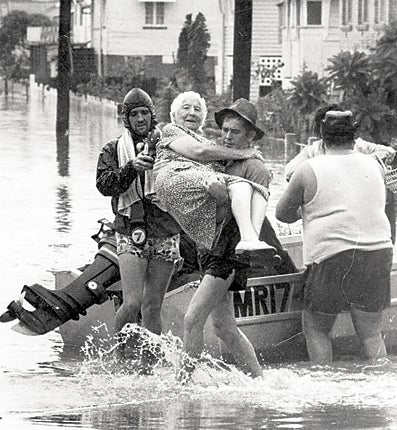Your support helps us to tell the story
From reproductive rights to climate change to Big Tech, The Independent is on the ground when the story is developing. Whether it's investigating the financials of Elon Musk's pro-Trump PAC or producing our latest documentary, 'The A Word', which shines a light on the American women fighting for reproductive rights, we know how important it is to parse out the facts from the messaging.
At such a critical moment in US history, we need reporters on the ground. Your donation allows us to keep sending journalists to speak to both sides of the story.
The Independent is trusted by Americans across the entire political spectrum. And unlike many other quality news outlets, we choose not to lock Americans out of our reporting and analysis with paywalls. We believe quality journalism should be available to everyone, paid for by those who can afford it.
Your support makes all the difference.Australia Day fell on a Saturday at the end of an already unusually wet summer in late January 1974. Brisbane's 900,000 inhabitants were dancing to Helen Reddy and the Rolling Stones. In the skies above them a moving monsoonal trough producing heavy rain was drifting further south than usual. Over the Queensland capital, it met the weakening Cyclone Wanda.
The result was the city's worst flooding of the century. Roads collapsed, boats were jammed under bridges, thoroughfares turned to rivers. Thousands of homes were flooded, 14 lives were lost, and the cost of the damage was put at A$200m.
The water rose to 5.45m, almost a metre higher than the flooding which struck the city yesterday. But Brisbane, which is under water now, is markedly different from the city of 37 years ago.
For a start, its population is twice as high. As Queensland's premier, Anna Bligh, explained: "Many parts under flood didn't even exist in 1974."
In 1974, when the water eventually subsided, the director of meteorology found himself at the centre of a fresh storm. He defended his bureau's forecasting but admitted to "problems of dissemination and interpretation of the warnings." He concluded: "Some people have been permanently affected, both physically and mentally, by the shock of the flood and its aftermath." The same is undoubtedly true today, 37 years on.
The floods are less a part of Australian folklore than the Hunter River bursting its banks in 1955, forming an inland sea the size of England and Wales and claiming 25 lives. Some have said this week that times of relative drought since then have caused them to forget the lessons of the disaster.
One consequence of the 1974 floods was the construction of the Wivenhoe Dam, 50 miles east of Brisbane. Fifty metres in height, it holds twice as much water as Sydney Harbour. On Tuesday it was at 190 per cent capacity.
"A dam cannot stop the sort of flood that is coming across the plains, the Lockyer Valley and the catchment area into the Wivenhoe system," Ms Bligh said yesterday – yet it was built in response to a flood larger than this one.
One key recommendation of the director of meteorology's report from 37 years ago is sure to be scrutinised again in the coming weeks: "The January 1974 flood has shown that such a flood warning service is of limited value unless the bureau's forecasts are properly interpreted by responsible authorities, and the public is subsequently advised of the expected level and extent of inundation in their own streets and houses."

Join our commenting forum
Join thought-provoking conversations, follow other Independent readers and see their replies
Comments